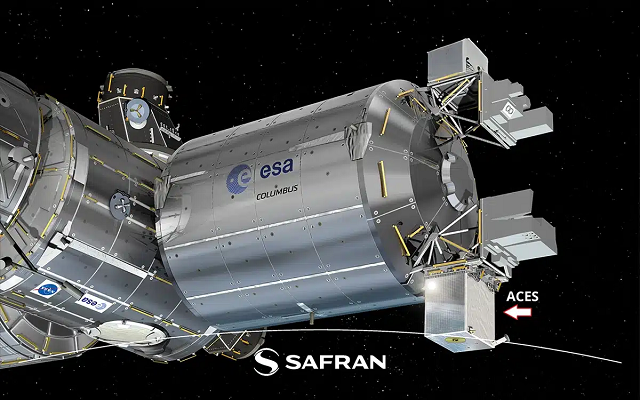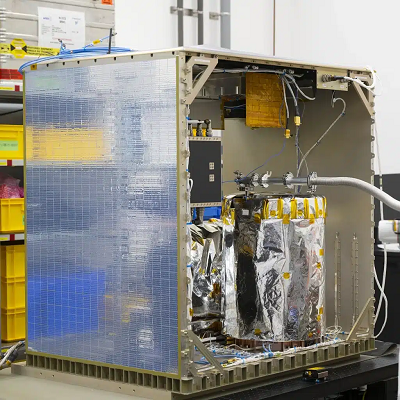
ESA’s ACES Mission
Safran Electronics & Defense proudly celebrates the successful launch of the European Space Agency’s (ESA) groundbreaking Atomic Clock Ensemble in Space (ACES) mission, which took place on April 21, 2025. As a key contributor to this mission, Safran has developed the Space Hydrogen Maser (SHM), a next-generation atomic clock that brings unparalleled precision to space-based timekeeping.
Now installed aboard the International Space Station (ISS), the ACES mission is establishing an ultra-precise global time and frequency reference system, enabling groundbreaking tests in fundamental physics, time synchronization, and general relativity.
At the core of this mission are two cutting-edge atomic clocks:
- PHARAO (Projet d’Horloge Atomique à Refroidissement d’Atomes en Orbite), a laser-cooled cesium atomic clock developed by CNES (French Space Agency), ensuring long-term accuracy.
- SHM (Space Hydrogen Maser), developed by Safran Electronics & Defense, which offers exceptional short-term frequency stability.
Safran’s SHM is a state-of-the-art active hydrogen maser that outperforms traditional spaceborne frequency standards, providing stability ten times better than the passive hydrogen masers onboard Galileo satellites. By pairing SHM’s stability with PHARAO’s accuracy, ACES is achieving an unprecedented timekeeping precision, maintaining accuracy within one second over 300 million years.
The development of the SHM started in 2008, under the supervision of Airbus Defence & Space and with fundings provided by the European Space Agency’s (ESA) with the support of the Swiss Delegation. The Swiss Technology and Innovation Center CSEM, also contributed to the initial conception as well as the mechanical and thermal analysis of Safran’s SHM.

“Safran Electronics & Defense is honored to be a key contributor to ESA’s ACES project,” said Didier GOUJON, Atomic Clocks Programs Director at Safran Electronics & Defense. “The successful deployment of the Space Hydrogen Maser on the ISS marks a major milestone in our commitment to advancing space science and fundamental physics.”
With ACES soon operational, high-precision clock comparisons between Earth and space are enhancing global time synchronization, improving space navigation, and allowing for some of the most precise tests of Einstein’s theory of general relativity ever conducted.
With the SHM, Safran continues to push the boundaries of technological innovation, shaping the future of space exploration and scientific discovery.
Safran is more than ever the pioneer and leader in the space field of high-performance atomic clocks and ultra stable oscillators.
For more information visit here.
















